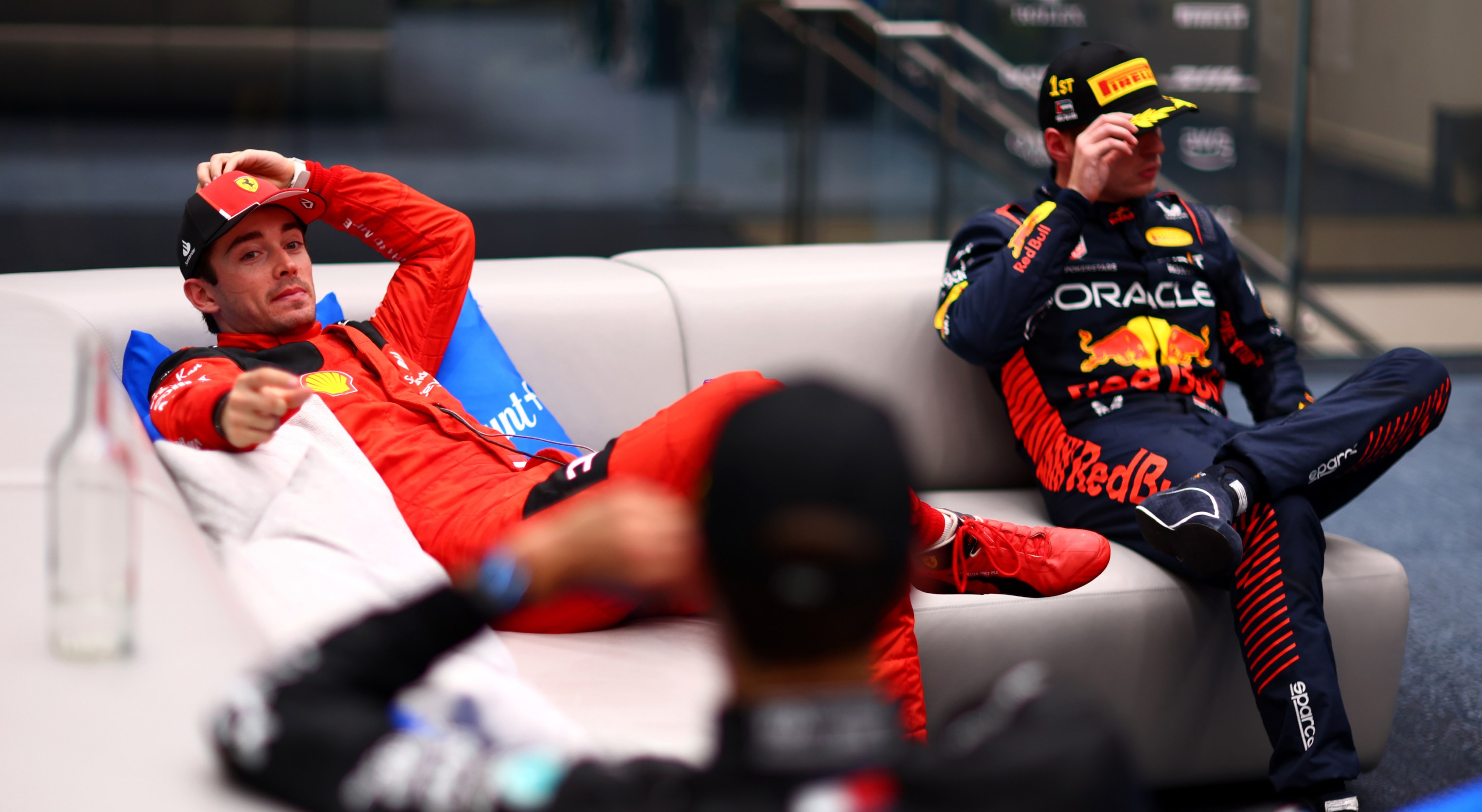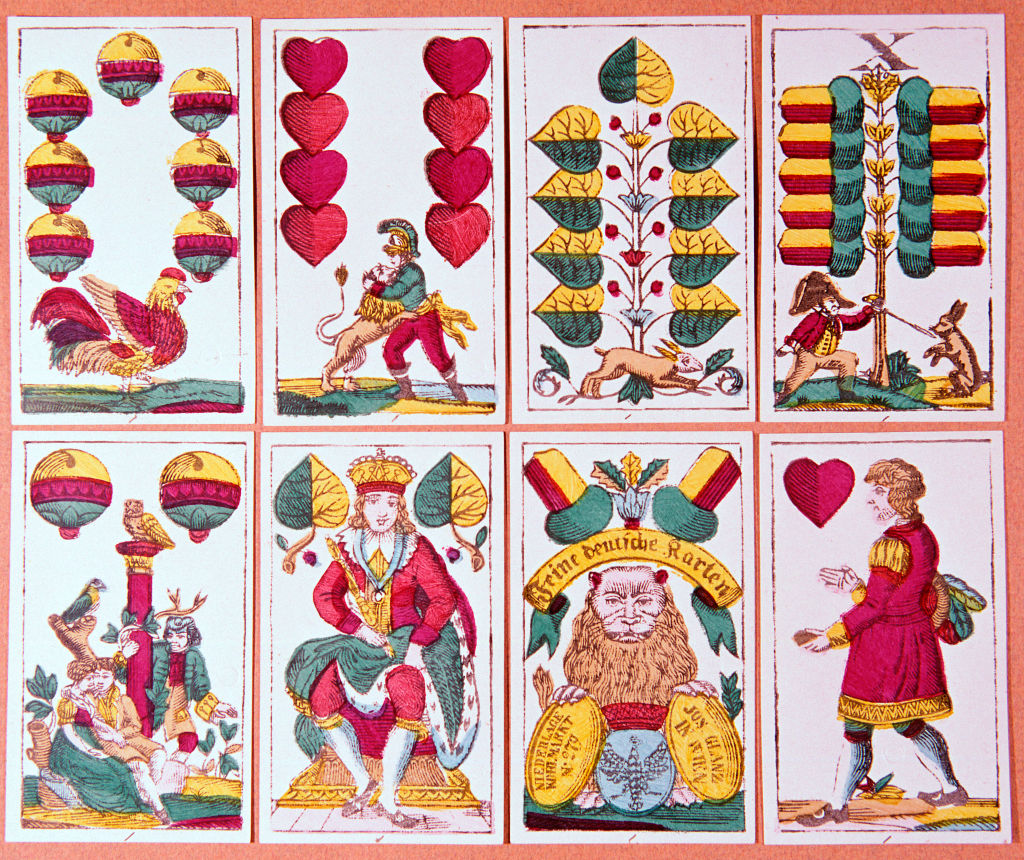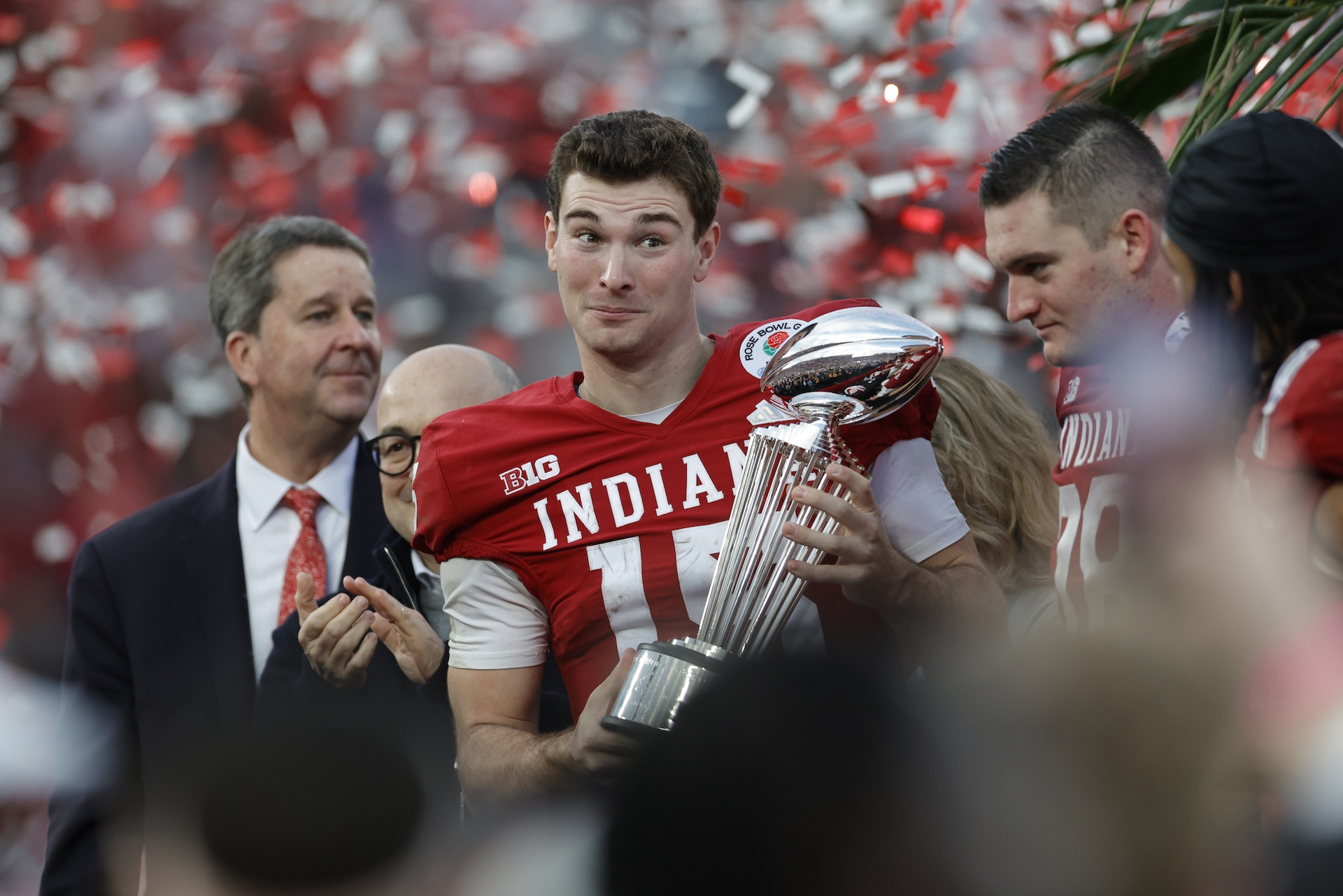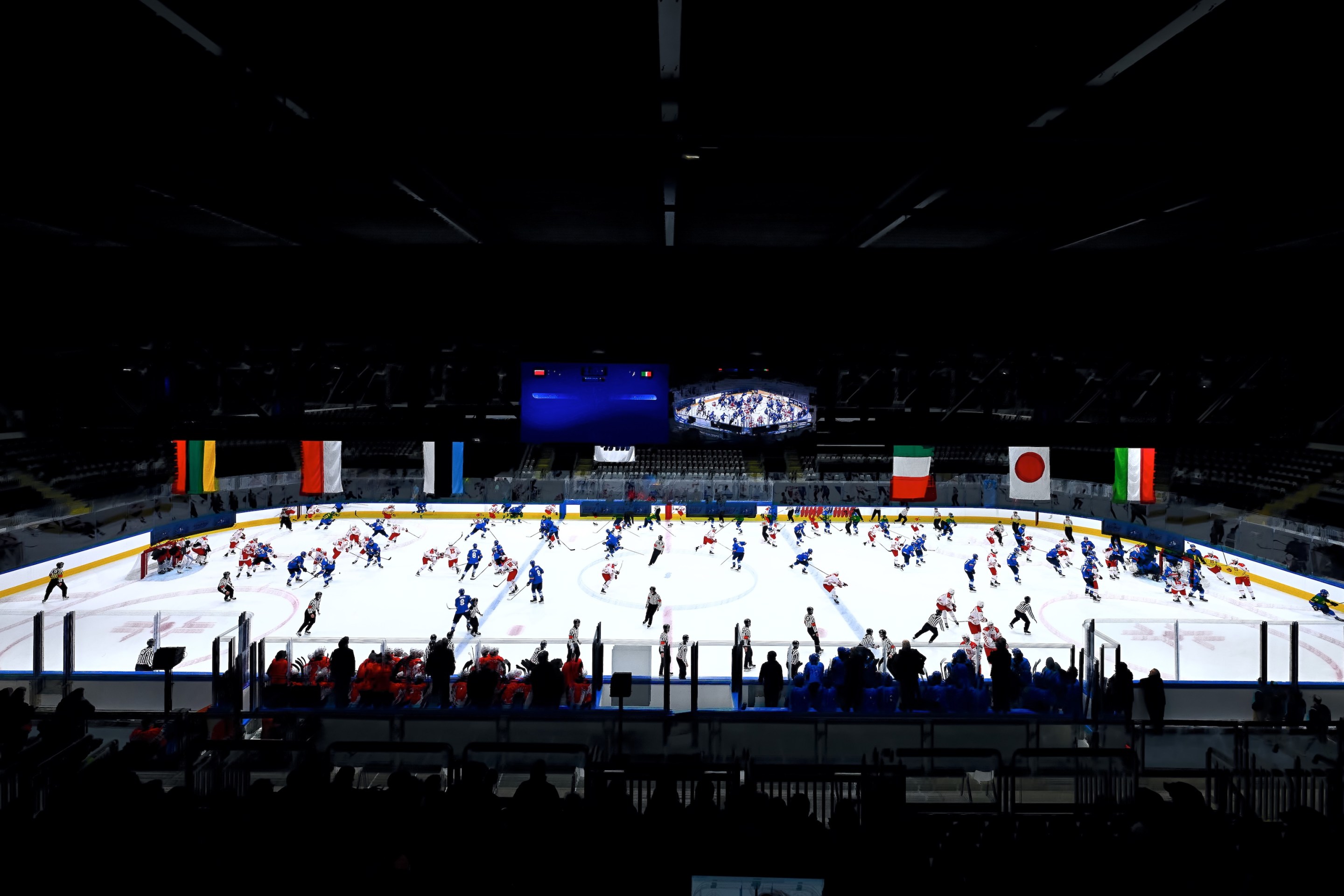In a thrilling upset that no one could have anticipated, Max Verstappen has finished the 2023 Formula 1 season with his third world championship—kidding, kidding. Not about the fact that Verstappen had won, to be clear—he'd cinched that over a month ago—but just that it was a thrilling upset. Wrong script! It's the joy of the end of the F1 season, where the person who won the championship is so rarely the focus because they've already won it several races ago. But Verstappen's accomplishment does bear mentioning anyway, at least because he squeezed one last record in the books at the final race. With the Abu Dhabi Grand Prix over and the season finished, Verstappen became the first driver to surpass 1,000 laps led, he broke Jim Clark's 1963 record for the highest percentage of laps led in a season with 75.7 percent to Clark's 71.5; by virtue of the times, he led more laps this season than Clark even raced.
But, in the spirit of not being such an [insert alliterative pessimist of your choice] about this whole thing, it's time to break out a respectable truism: Just because there wasn't championship drama doesn't mean that there wasn't drama at all. After Mercedes spent most of the season in a more-or-less comfortable P2 in the Constructors' Championship, Ferrari whittled the gap down to just four points. The fight for P2 in the Drivers' Championship, however briefly exciting, was always a long shot so long as Sergio Pérez could find a bit of form again—not unlike Valtteri Bottas and Verstappen during the 2020 season—but P4 became a four-way scramble between Charles Leclerc, Lando Norris, Carlos Sainz Jr., and their fellow young driver Fernando Alonso.
Then Abu Dhabi got off to a chaotic start. Sainz had an unfortunate qualifying, somewhat alleviated by the fact that Lewis Hamilton had his second Q2 exit in as many races, and suddenly it was Leclerc who was facing unexpected opportunity on race day. This season, both Ferrari drivers had found themselves operating in-race like one-man teams, managing aspects of strategy while driving, and otherwise doing everything short of hopping out of the car during pit stops and helping the mechanics. Late in the race Leclerc asked over team radio what was the gap between Drivers' Championship rival Pérez and Constructors' Championship rival George Russell. Pérez was ahead of Russell in P3, though he had yet to serve a five-second time penalty after an earlier collision with Norris. The answer: Russell was within five seconds of Pérez meaning that effectively, he was running in P3 while Pérez was in P4.
This next bit requires a bit of arithmetic—everyone's favorite. Thanks to having more wins than Mercedes, Ferrari needed to make up only four points in order to win the championship—the tiebreaker would take care of the rest. With Leclerc running in P2, Russell in effectively P3, and Hamilton in P9, Ferrari was only making up one point. But if Pérez could build the gap to above five seconds, then Russell would finish P4, earning 12 points instead of 15—just enough of a difference that Ferrari could clinch P2 and the roughly $9 million more in prize money that comes with it.
Leclerc allowed Pérez to pass him, in the hopes that giving Pérez clean air—and there was a lot of it with Verstappen sailing off into the distance—would allow him to build the necessary gap to Russell. All Leclerc had to do was stay within five seconds of Pérez, and his position in both championships would remain unaffected. Unfortunately for both Ferrari and Pérez, Pérez came a second short of that gap, leaving Mercedes ahead of Ferrari by just three points, which proved enough. It is very Ferrari that despite Leclerc's strategic awareness, it didn't matter in the long run; his heroics weren't enough to earn him P4 in the championship.
Despite Aston Martin's sharp drop-off during the second half of the season, Alonso and Leclerc finished tied in points for P4, and this time, the tiebreaker went against Ferrari. It bears mentioning here that Alonso, who finished P7, could've earned a harsh penalty during the race—on lap 37, while he and Hamilton approached turn five, he slowed down drastically on the straight before the braking zone. Hamilton accused Alonso of brake testing him (an example and non-example from recent F1 history)—which, if stewards were to follow precedent, would have earned Alonso around a 10-second time penalty.
Not unlike an elderly relative, Alonso usually elicits a reaction between Oh, silly Nando! and Fernando, you sly old fox from commentators whenever he does a little rule violation on the race track. Sky Sports analyst Anthony Davidson showed that Alonso had slowed down in a part of the track where the car would normally be accelerating—in an F1 car, abrupt deceleration can be done solely by lifting off the gas and doesn't require breaking; for his part, Alonso claimed that he was playing the DRS manipulation game, and cited the 2012—though he likely meant 2013—Canadian Grand Prix as an example. Notably in 2013, Hamilton and Alonso were side-by-side, which is the usual formation for DRS chicken to be played because slowing down causes the other unsuspecting car to naturally pass, which does not happen when cars are single file—this is because in situations where the cars are single file, the act is more commonly referred to as brake testing. Nonetheless, the incident received no further action, which was especially notable as Pérez had been summoned by the race stewards and given a formal warning for calling them a "joke" over team radio.
It is striking how F1 as an enterprise has not been able to give some semblance of consistency to its stewarding. A large part of the issue is that the panel of stewards is different at every race; the decisions most consistently handed out—five-second penalties for causing a collision that could take an opponent out of the race—aren't sufficient to discourage drivers from dive bombs. In the case of Alonso, a penalty would have drastically altered the result of the drivers' championship. The four-way fight resolved into, in order, Alonso, Leclerc, Norris, and Sainz, where even a five-second time penalty would've elevated both Leclerc and Norris.
These battles in the Formula 1.5 standard of racing aren't worthless—think performance bonuses and prize money—but Hamilton made sure to keep everything in context after the race. “Red Bull won by 17 seconds, and they’ve not touched the car since August or July,” Hamilton said.
Ah, yes—representing doomers everywhere with his willingness to wade into alliterative pessimist territory. It is, ultimately, true. Charles Leclerc was playing these strategic games while 17 seconds behind Max Verstappen. Let's be clear: $9 million in prize money is nothing to turn your nose up at, but from a pure competition perspective, no matter who finished P2 in either the drivers' or constructors' championship, Verstappen and Red Bull will still be on top. With an engine freeze in place, it's even less likely that any other team is going to make a leap and contend like Red Bull managed in 2021. Quoth Sir Lewis Hamilton, once again after Abu Dhabi: “So you can pretty much guess where [Red Bull are] going to be next year.” Now that's an F1 season recap if I've ever heard one.






